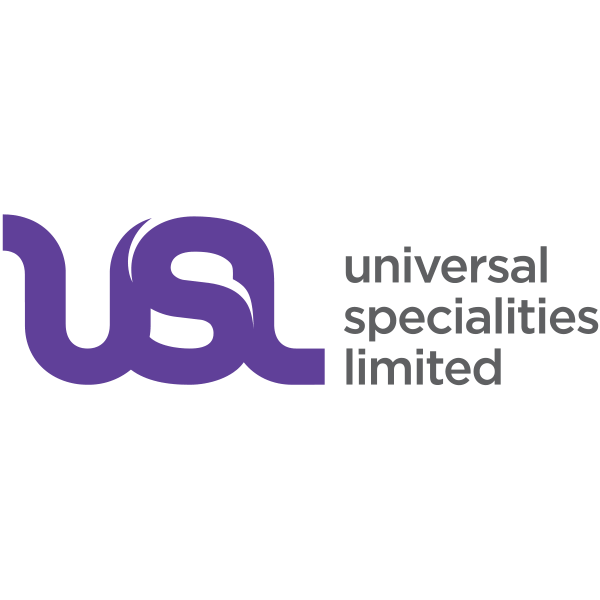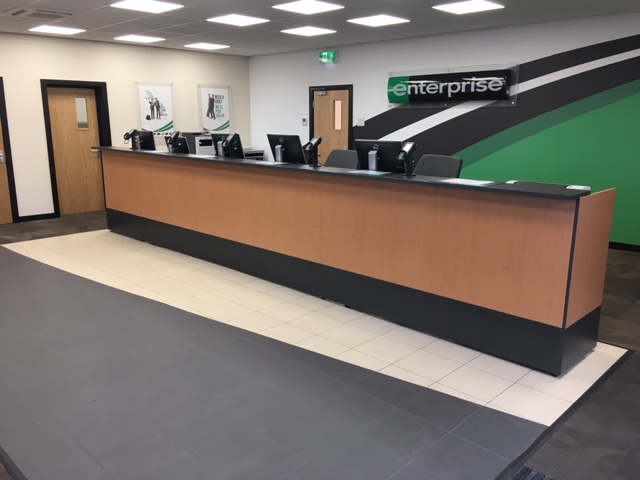Title Page
-
Site conducted
-
Audit Number
-
Prepared by
-
Department
-
Conducted on
-
Auditor
-
Reviewer
-
Auditees
4. CONTEXT OF THE ORGANISATION
-
Have you determined the external and internal issues that are relevant to your organisation?
-
Are the needs and expectations of workers determined?
-
Do you monitor and review information on these issues?
-
Have you identified the interested parties that are relevant to the Integrated Management System?
-
Have the boundaries of the management system been determined and documented? (Considering external and internal issues, requirements of interested parties and your products and services)
-
Do you maintain necessary documented information to support the processes and have confidence they are being carried out to plan?
5. LEADERSHIP
-
Does top management demonstrate leadership of the Management System by accounting for its efficiency, promoting QHSE principles, promoting improvement, and ensuring resources are available?
-
Does the leadership show involvement regarding customer focus, customer and statutory requirements, risks, and opportunities, and enhancing customer satisfaction, employee, and environmental safety?
-
Is a QHSE policy established? Is it appropriate for the organisation, provides a framework for objectives, and shows commitment to satisfying requirements and continual improvement?
-
Are the QHSE policies available, communicated, maintained, and understood by relevant interested parties?
-
Has top management assigned responsibilities and relevant roles for the Integrated Management System development, reporting, and maintenance so that it meets the intended goals? (H&S and EMS incl.)
-
Are staff aware of their responsibility to the QHSE? Refer to the Skills matrix - is it current?
6. PLANNING
-
Has the QHSE considered the company risks and opportunities?
-
Are these risks and opportunities developed, reviewed, and integrated into the IMS?
-
Have you established objectives for the QHSE that are measurable, monitored, communicated, updated, and documented?
-
Does the company have a defined “Change management Process” for implementing changes to the QHSE?
-
Has the company established, implemented, and maintained a proactive process for hazard identification?
7. SUPPORT
-
Does the management determine the resources for the company's needs?
-
Does the company provide the relevant tools and equipment for staff to perform their work while keeping staff and the environment safe?
-
Is there a maintenance schedule for tools and equipment? (Calibration schedule)
-
Is organizational knowledge determined and transferred? (Training, induction, lessons learned, experience results from audits)
-
Have you determined the necessary competence required of persons who will perform functions within the Integrated Management System processes?
-
Are there Internal Training (Induction) Competency Records?
-
Have you taken actions to ensure persons doing work within the Integrated Management System know the QHSE policy, QHSE objectives, and how they contribute to the Integrated Management System, including the implications of non-conformance?
-
Have you determined processes for internal and external communication? (What, when, with whom, how, and who communicates)
-
Have you set up a process for the control of documented information? (Including creating and updating, control of use, adequate protection, control of distribution and changes)
8. OPERATION (Quality)
-
Does the organisation determine the requirements for the requested products and services?
-
Does the organisation establish the criteria of the required processes for providing products and services?
-
Have you determined the acceptance criteria for products and services?
-
Has the organisation determined the resources needed to achieve conformity to the product and service requirements?
-
Has the organisation determined how to implement the controls of the processes in accordance with the criteria?
-
Do you have documented proof that the processes have been carried out as planned and it conforms to the requirements of the products?
-
Are the outputs of the implemented plans in line with the organisation's operations?
-
Does your organization control planned changes and review the consequences of unintended changes? including taking action to mitigate any adverse effects, as necessary?
-
Does your organization ensure that outsourced processes are controlled?
-
Is there a process in place for communicating with customers about providing information on products and services, receiving customer feedback, handling enquiries, or establishing a specific requirement for contingency actions?
-
Are the requirements for the products and services defined with applicable statutory and regulatory requirements?
-
Is the organisation able to meet the requirements stated in the original agreement to the client (Including requirements added as part of customer changes)
-
Does the company retain documented proof of requirement changes?
-
Is there a process in place for planning the DESIGN AND DEVELOPMENT of products or services, considering the nature, duration, and complexity of the activities, the stages, the validation, the responsibilities, the internal and external resources, the level of control, and the documented information?
-
Are the inputs for design and development considered, and comprehensively documented? (Functionality and performance, statutory and regulatory, standards or codes of practice and potential consequences of failure)
-
Do you have review and verification processes in place to ensure that the expected requirements being met?
-
Is there documented proof that these requirements are being met?
-
Are the criteria for external contractors and suppliers identified and documented? (Approved suppliers)
-
Are external suppliers or contractors selected, evaluated, and monitored for performance based on the organisation requirements?
-
Are there controls to ensure the externally provided processes meet the organisational requirements?
-
Are changes to services or products from contractors or suppliers documented and communicated?
-
Is there documented information defining the characteristics and the expected results of the products or the services from suppliers and contractors?
-
Is there documented information for the verification of the required criteria being met?
-
Are actions implemented to prevent human error?
-
Are monitoring and measurement processes implemented to verify the criteria for products and services?
-
Are customer products reserved and protected before delivery?
-
Are post-delivery activities for products and services defined and records of implementation documented? (Statutory and regulatory requirements, the intended lifetime of product or service, customer requirements and feedback)
-
Do you control records of changes to your products or services after the product has been delivered or the service provided?
-
Does the company perform regular inspections to ensure that the product or services conform to client requirements? (Do you have a final inspection process in place?)
-
Are the results of these inspections recorded and kept as records?
-
Are non-conforming products and services identified, corrected, segregated, contained, returned, or suspended?
-
Is the customer informed of the nonconformance?
-
Are documented information describing the nonconformance recorded and actions implemented?
8. OPERATION (H&S)
-
Does the organisation plan, implement, control and maintain the criteria for H&S processes?
-
Does the organisation have controls in place to ensure that H&S processes are implemented as per the criteria?
-
Does the company have documented proof that the H&S processes have been carried out as planned?
-
Does the company have implemented plans and place to adapt the working environment to the workers?
-
Is the H&S programme constantly implemented across the whole organisation and all its work areas?
-
Does the organisation have an implemented and maintained process to determine, eliminate, and reduce OH&S risks?
-
Does the organisation have a process to implement and control changes that have an impact on the H&S management system performance?
-
Are these changes reviewed and evaluated?
-
Does the organisation have an implemented and maintained procurement process for the products and services that impacts the H&S management system
-
Are the contractors' activities assessed to determine their impact on the H&S of the organisation?
-
Are the organisation's activities assessed to determine its impact on the contractors?
-
Are the contractors' activities assessed for the impact on other interested parties?
-
Are contractors inducted with the organisations H&S processes?
-
Do you have documented evidence of contractor induction?
-
Does the selection of contractors include the evaluation of their procurement processes?
-
Are there controls in place for the functions and processes outsourced to contractors?
-
Do the outsourced arrangements comply with all legal and other requirements?
-
Do you have an emergency response plan?
-
Is the emergency response plan up to date?
-
Has the plan been communicated to all staff?
-
Do you have records of the emergency response plans being carried out?
-
Are the building WOFs for all premisses’ up to date?
8. OPERATION (ENVIRONMENTAL)
-
Does the organisation plan, implement, control and maintain the criteria for environmental processes?
-
Does the organisation have controls in place to ensure that environmental processes are implemented as per the operating criteria?
-
Does the organisation have a process to implement and control changes that have an impact on the environmental management system performance?
- Yes
- No
- N/A
-
Is the impact of these changes reviewed and evaluated?
-
Does the organisation have control and an influence on the outsourced processes that have an impact on the EMS?
-
Has the organisation established controls to ensure the EMS addresses the development process for services and products?
-
Are the environmental requirements for the procurement of products determined?
-
Are the environmental requirements communicated to contractors? (EMS contractor induction)
-
Does the company provide information about transportation, delivery, use, end-of-life treatment, and final disposal of their products?
-
Does the organisation have an environmental emergency response plan?
-
Is the emergency response plan current?
-
Are the planned actions relevant to the potential environmental emergency and its impact?
-
Is the emergency response plan regularly tested?
-
Are the results of the EMS emergency response plan regularly reviewed and revised?
-
Does the organisation regularly provide updated information and training on environmental emergency response and preparedness?
9.0 PERFORMANCE EVALUATION
-
Have you determined the monitoring and measurement needs? (How it will be done, and when it shall be performed for the processes of the IMS)
-
Have analysis and evaluation been done on the data and information arising from monitoring and measurement?
-
How is customer feedback recorded and monitored?
-
Has the organisation maintained a list of compliance and regulatory requirements?
-
Are there audit procedures to evaluate the Integrated Management System against the planned arrangements? (Including effectiveness, proper implementation, and maintenance
-
Are the internal audits planned for regular intervals?
-
Are results reported to management?
-
Does top management review the data from the Integrated Management System to assess the need for change in the Integrated Management System, resource adequacy, and the effectiveness of the QHSE?
10. IMPROVEMENT
-
Do you identify opportunities for improvement and implement action to meet requirements and enhance customer satisfaction?
-
Do you identify and record nonconformances to the Management system?
-
Are the root causes of the nonconformances reviewed and the effectiveness of the corrective actions evaluated?
-
After an action is taken, do you update any risks and opportunities found during the corrective action and update the Integrated Management System if necessary?
-
Do you continually improve the suitability, adequacy, and effectiveness of the Integrated Management System?
Conclusion
-
Audit Summary









![EMS Internal Audit Protocol: Management Level (3) CHECK [BAC-ENV-FRM-12] EMS Internal Audit Protocol: Management Level (3) CHECK [BAC-ENV-FRM-12]](/media/b472f527-0cde-4528-8e93-2182b87d066a)

